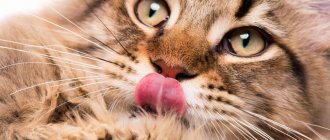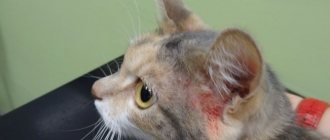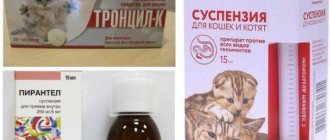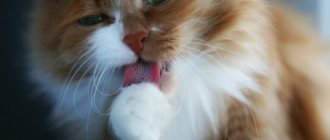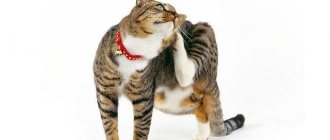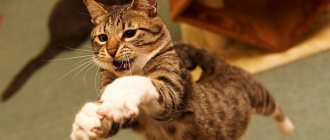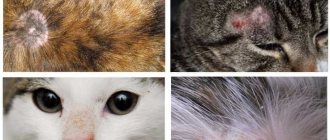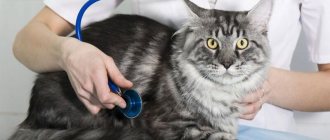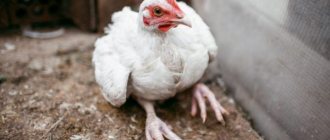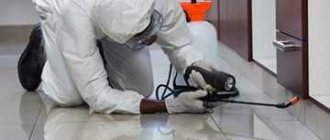If a cat licks its fur right down to its skin, this may be a sign of severe stress and the influence of other external factors. In veterinary medicine, this phenomenon is known as overgrooming.
If owners notice hairless patches on the belly, back, tail, hind legs and other parts of the body, the problem may be lice, fleas or small parasites.
Wounds that a cat scratches to the point of bleeding can lead to serious complications, including sepsis, if owners do not seek treatment for the underlying condition.
What to do if a cat licks its fur?
Cats are very clean, and licking their fur is a normal need. It cleanses the cat's fur of impurities and improves its thermoregulatory properties.
Our furry pets spend a lot of time grooming their fur every day, but if you notice that this grooming process has become obsessive, licking your cat's fur all the way down to the skin, it's important to find the cause.
Frequent intense licking is an alarming signal indicating the presence of any abnormalities or complications.
How to treat?
Constant licking of fur down to the epidermis is not normal and requires therapeutic measures. It is impossible to eliminate the problem without finding out its original source. To do this, contact a veterinarian who will conduct a diagnosis and select medications if necessary. Drug treatment is required for atopic dermatitis. To eliminate itching, the following medications are prescribed for cats:
- "Prednisolone";
- "Dexamethasone."
When a pet licks its fur to the skin under the influence of stress factors, the cat needs to be provided with peace and surrounded with care. If pathological licking occurs against the background of an allergic reaction, then the influence of the irritant on the cat’s body is immediately excluded. If the violation does not go away, then additional antihistamines are prescribed. To combat the problem caused by small parasites, pet hair is treated. For this purpose, you can use antiparasitic drops, tablets or sprays.
Causes of Excessive Licking
The cat's tongue has spines that effectively clean the fur and skin. After eating, the cat must lick its face and ears. However, if the cat does not eat, does not sleep, but licks more and more each time, this is a sign that the animal has health problems:
The owner must monitor the behavior and condition of the animal. Excessive licking develops into a habit that persists even after the cause is eliminated. With timely treatment, the habit goes away spontaneously in about 20 days.
Insufficient self-care
Regular self-care will help your pet look and feel great, but if she gets sick, she may stop taking care of herself. This happens with arthritis, pain or dental problems. Cats that are taken from their mothers too early may simply not know how to properly care for themselves.
Watch for these warning signs of poor self-care:
- Coarse or greasy coat.
- Small tangles on the body or tail.
- Traces of urine or feces on the paws.
- Unpleasant smell.
- Food particles on the face or chest after eating.
To give your pet an incentive to start grooming herself, start brushing her daily. Brushing stimulates the skin and blood circulation, and rids the animal of fleas and ticks. When she starts licking herself, try not to interrupt her. This is important for your cat, so let her get the most out of it.
Why is overgrooming dangerous for cats?
Frequent and intense licking of a cat's fur can have serious consequences for its health.
The main signs of excessive grooming are:
- Baldness, hairless areas, bald spots on the body;
- Areas with sparse, brittle hair;
- Deterioration of coat condition;
- allergic symptoms;
- Scratches, ulcers, long-term non-healing wounds on the body;
- Drowsiness, apathy, or, conversely, constant anxiety.
Frequent licking can damage any area of the dermis that the cat can reach with its tongue. Lesions are most often observed on the abdomen, inner surface of the hind legs, front legs, flanks and sternum. The lesions are located symmetrically on the body.
By intensively licking the fur on its hind paw or tail, a cat can injure itself. If an infection gets into the wound, it will lead to acute inflammation in the deeper structures of the dermis. In severe cases, if the cat chews the skin, necrotic lesions may develop at the site of the injury.
Fleas, dewormers, viruses and bacteria can be acquired from fur by licking the skin. Excessive grooming can lead to disruption of the natural process of hair replacement, deterioration of the protective properties of the coat and dermis, which is especially dangerous for cats moving on the streets.
Stress
Unusual or even inappropriate behavior in a cat is not always a consequence of its poor physical health. Sometimes the reason has an emotional basis.
There are many situations that can cause stress in an animal:
- Relocation of a family member;
- Moving furniture;
- Loss of a pet's favorite toy;
- The appearance of another pet in the house and much more.
A cat's life is predictable and orderly, and everything that brings change is not always good for it.
Owners often try to impose their own rules on the cat.
But a freedom-loving cat may have its own ideas. You can't just rush the cat, it won't work. You may cause emotional distress. It is better to find mutual understanding with your pet.
Compromise is the only way out of the situation.
If the animal feels itching, it will actively lick the area. There is a clear pattern: a cat will lick wounds more thoroughly than scratch them. If the licking area is large, it means the cat is itching. In addition, attentive owners have noticed that when cats itch, they often lick their back, belly and other parts of the body.
Why does a cat constantly lick itself?
Overgrooming or extreme licking of fur can be triggered by various unfavorable factors. This behavior often signals functional and systemic failures in the animal’s body.
© shutterstock
Reasons for licking:
- stress, nervous shock;
- invasive diseases;
- food allergies;
- taking steroid drugs;
- hormonal imbalance, endocrine pathologies;
- hypovitaminosis;
- metabolic disorder;
- hyperesthesia syndrome (idiopathic syndrome);
- dermatological diseases (flea dermatitis);
- diseases of the excretory system;
- peritoneal injuries, skin damage.
Overgrooming is a reaction to a pain reflex in the body that cats feel, so pets intensively lick the areas of pain and discomfort.
For example, if a cat licks fur on its stomach, this may indicate inflammatory processes in the organs of the reproductive system. This behavior is observed with mastitis, endometritis, and urolithiasis. If a cat licks its hind paws, the area near the anus, this may indicate inflammation of the anal glands.
© shutterstock
A common cause of overgrooming is a disorder of protein metabolism. It develops due to excessive intake of proteins into the body of animals with feed.
In any case, if the cat constantly licks itself, chews its fur, or even bites itself, we recommend taking your pet to a veterinary clinic, where the necessary tests will be taken, diagnostic tests, and studies will be performed.
Parasites can cause increased licking of fur
Both internal and external infections can make your cat want to lick the skin. In cases of parasitic infection, excessive licking is usually localized.
For example, an animal infested with fleas will lick and nibble on areas where there are blood vessels nearby: the belly and tail area. He will also scratch your neck and head in places where his mouth cannot reach.
If your cat is constantly licking under her tail, she may have worms, as their presence causes itching in the area.
Cats suffer from the following types of worms:
Worms attack various organs of the animal, including the liver, brain and lungs. However, regardless of where they live, they use the host's feces to spread.
Feces contain worm eggs, which secrete substances that cause itchy skin. As a result, the animal will actively lick the area under the tail, allowing new individuals to enter the body.
Check your pet's fur for skin parasites. Flea eggs (the insects themselves) or ticks, not yet swollen with blood and not visible in the fur, may be on parts of the body that attract your pet's attention. Look for signs of worms in your cat's feces.
If your cat constantly scratches and licks itself, but there are no fleas, small mites of the genus Sarcoptes scabiei may be the cause of the illness. These parasites can cause sarcoidosis, a disease characterized by red, scaly, and itchy skin. It can also happen that a cat licks its belly to the point of going bald due to demodex.
Demodex cati mites, like in humans, can coexist peacefully with a healthy person, manifesting themselves when the immune system is weakened. Foci of infection are located on the neck, head, ears and eyelids.
The presence of invisible parasites can be detected by a veterinarian by examining scrapings from the affected areas. Treatment depends on the type of infection. To combat skin parasites, a specialist may recommend an external remedy, for example, Bars Forte drops, which fight many arthropods. The drug kills larvae and adults by affecting their basic biological processes.
For diseases caused by helminths, it is convenient to use drugs in the form of dry food. Cats eat them more readily than tablets or emulsion - in this form they will easily spit out the medicine.
All types of medications are prescribed as part of treatment. Repeated use of the drug should be resumed after approximately 10 days. If helminths are detected, it is recommended to carry out preventive treatment of all inhabitants: people and animals.
Examination by a veterinarian and diagnosis
The effectiveness of treatment depends on an accurate diagnosis. As mentioned above, you should definitely contact a special clinic. Prescribing medications yourself is very dangerous. From such “treatment” the cat may lose all its fur.
At the veterinary hospital, your pet will be able to undergo the necessary examinations. One of the main tests is a trichogram. Thanks to it, they receive information about the condition of the coat, making the first conclusions about the causes of the disease.
To care for a cat, you need to know what a furminator is for, whether cats need clothes, everything about mating cats, how to choose a comfortable carrier, whether you need to sterilize a cat, how to trim a cat’s claws, how to make toys for a cat with your own hands, how to give birth to a cat how to make a scratching post.
Did you know? Smuggling cats from ancient Egypt was punishable by death.
Problems not related to diseases
In some cases, excessive licking is not caused by any health problems.
This can be caused by various reasons, the most common of which are
- Stressful situations cause nervous tension, but in this case the cat’s behavior also changes. Her tail quivers, she shakes constantly, and her pupils are greatly dilated. Such conditions can occur during movement, with a sudden change in environment, or with aggressive behavior of other animals or owners.
- The desire to get rid of foreign odors, which most often manifests itself when a cat is stroked by a stranger or after returning from a walk in the fresh air.
- Fear of closed spaces, which may seem strange, but staying indoors for a long time has a negative effect on the cat’s psyche. In this position, he can lick himself to the point where serious wounds occur.
- Active grooming in the tail area when the female is in estrus, which is an attempt to clean the tail.
All pathological conditions should always be under observation, and the animal should not be deprived of attention.
Frequent and prolonged licking quickly leads to habituation, called excessive grooming. This is a mental disorder that is most common among purebred cats, but is also common in regular pets.
The cat licks and itches, but there are no fleas
Even if no fleas were visible during a visual inspection of the cat, this does not mean that there are none at all. Very often, small black grains are visible among the fur, very similar to trash - these are nits. And sometimes, small transparent bubbles – lice eggs – are attached to the pet’s hairs.
However, not only fleas can cause a cat to lick and itch. This can also be done by other pathological microorganisms, such as scabies mites. In this case, the pet will have visible skin damage on the ears, ankles and elbows.
Other possible reasons for your pet licking and scratching include:
- Allergies to food, plant pollen, hygiene products, or insect bites (the cat scratches its face, scratches its ears, intensively licks and bites its paws). In this case, the veterinarian will recommend a diet to test for any specific component of the food that is causing adverse effects.
- Fungal and bacterial inflammation. A set of certain fungi and bacteria are found on the skin and mucous membranes of both humans and their pets. Being in a normal state, these microorganisms do not harm. But if the immune system weakens, their number quickly increases, and inflammatory processes begin. Fungal inflammation causes severe itching.
- Otitis is an ear infection that causes itching. A cat with otitis media itches and displays the following signs: it scratches its face, furiously rubs its ears, and shakes its head; swelling and redness of the ears appears, and purulent discharge from the ears.
- Skin diseases (pyodermitis, notoedrosis, demodicosis, etc.) arise as a result of skin pathologies. The rashes that appear on the skin cause severe itching and discomfort. Scabies can also be accompanied by external signs such as baldness.
How to help a cat
To help your cat, you need to get to the root cause of the behavior problem. If the cause is a disease, the veterinarian will recommend symptomatic treatment with general and local drugs.
It is equally important to eliminate the factors contributing to the problem. Review your cat's diet, create optimal conditions and protect your cat from stress.
After treatment, bring your cat to the clinic several times a year for a comprehensive examination. In case of excessive care due to chronic pathology, relapses may occur.
Vitamin and mineral preparations, dietary supplements and animal shampoos with antiseptic and anti-inflammatory effects help restore the coat.
Psychological problems
The main psychological problems that may cause our furry friend to lick his belly are:
- Stress and Anxiety : A feline that is stressed or anxious has a tendency to lick its belly to calm itself;
- Boredom : To avoid boredom, a cat will often start licking its belly.
What to do in these cases? If your cat is stressed for any reason, it would be wise to spend more time with him, perhaps playing with him a little more or cuddling him more often.
Instead of "curing" your cat's boredom, you can offer her a variety of different games, some of which can keep her mind active.
Dangerous complications
Excessive grooming is a fairly serious deviation that can lead to negative consequences. Lack of timely and proper care can lead to:
- The formation of wool plugs in the cat's stomach and intestines, which leads to obstruction and accumulation of feces.
- The formation of non-healing wounds, ulcers or scratches, which are open gates for various infections. In severe cases, this can lead to the formation of necrotic lesions. To prevent this, wounds should be treated with antiseptic sprays and ointments and covered with bandages and plasters.
- The natural growth of the coat is disrupted and its protective functions deteriorate.
Excessive grooming is a pathology that requires a special approach and great responsibility. If it is caused by physiological health problems, treatment should be aimed at eliminating them. After recovery from the underlying disease, pathological licking will go away spontaneously.
Psychological problems will require more attention. Don't limit their freedom, play for at least 15-20 minutes a day, pet them regularly and show them love.
When moving, take familiar things with you, such as a cat house, scratching post or bed. In severe cases, veterinarians may prescribe medications to normalize the cat's condition.
Prevention
- At least once every six months, undergo a full examination, this way you can identify pathologies in your pet at stages of development.
- Try not to create stressful situations for your pet. And if this cannot be done (for example, when moving, etc.), then purchase sedatives.
- Examine your cat daily so you can notice skin damage and then help your pet with recovery.
- Make a proper diet, so it is better to consult a doctor. After all, he will be able to create a diet taking into account the health characteristics of the cat.
Interesting facts about cats
Why do cats spend so much time licking their fur? For cats, licking, in addition to being a means of hygiene, is a way to maintain mental balance. Grooming calms and neutralizes incipient aggressiveness. By licking, the cat licks from the fur a certain amount of a substance containing vitamin B, which is necessary to regulate mental balance. If you deprive a cat of this opportunity, he will become nervous and may even die.
Why does a cat sometimes try to lick your face or hair? The first impression a kitten receives from its mother is care in the form of licking and washing. For him, this is an act of care and concern, so if the cat (or cat) tries to lick you, take it as an attempt to take care of you in a motherly way.
Why do cats sometimes lick and bite woolen clothes, balls, scarves? There are several theories, but scientists generally believe that the reason is the same as in the previous question.
Why are some people allergic to cat hair? Strictly speaking, the allergy is not caused by fur, but by the FEL D1 protein contained in cat saliva. When a cat washes itself and licks itself, it transfers saliva to its fur, after which it can end up on furniture and carpets. Different individuals have different amounts of protein secreted, but in general, cats are less allergenic than cats. There are two ways to prevent such an allergy - bathe the cat, rinsing the substances from the fur (which is not recommended to do often), or wipe the cat's fur with a special soft cloth.
Why does a cat, lying in your arms, move its paws, “beating” something? The reason again lies in childhood. A kitten feeding on mother's milk, massaging the cat's belly with its paws, stimulates the “supply” of milk. An adult animal uses this technique to show extreme comfort and satisfaction.
Why do cats usually go into the arms or lay on the legs of those who don’t like them? When one cat tries to scare another, it arches its back, raises its fur, and lets out a menacing hiss. If a person does not like cats, he tries to sit quietly so as not to attract the attention of the animal. And the cat considers this a sign of favor. Doesn't hiss, doesn't move - that means he's a friend.
Why does a cat try to hit its head on a person? It turns out that this is a way of expressing affection, and they can express this behavior in relation to other members of their tribe, not just people.
Why do cats scratch furniture and wallpaper? It is generally accepted that this is how cats sharpen their claws. But even if you offer your cat a convenient nail sharpener, he will still be happy to sharpen his claws on the corner of the wall or sofa (in your absence). This happens, among other things, because on the cat’s paws, between the toes, there are special glands with which the cat marks its territory.
Why do cats rub against furniture, table legs, legs? Cats have special glands on the tail, on the sides of the head, on the lips, on the tongue, near the genitals and between the front legs. They use them to mark their territory. When a cat rubs against your leg, he is marking you, indicating that you are “his.” For the same reason, cats rub against furniture and corners of rooms.
Why immediately after you pet your cat does he begin to lick himself? There are two theories, according to one, the cat is trying to get rid of your smell, according to the second, on the contrary, he tastes it with his tongue in order to “continue the pleasure.”
Why can a cat, if petted for a long time, suddenly scratch or bite? If a person accidentally touches sensitive areas for a cat - ears, nose, tail, the cat may make a sound that “enough is enough!”, but if the person does not stop, then the cat may bite or scratch. He just gets tired of affection.
Why does a cat, when passing another cat, slow down and move slowly? All cats are territorial animals. They distribute territory among themselves depending on the level of the internal hierarchy. Any encroachment leads to open conflict. Therefore, if a cat just wants to pass by, it tries to slow down and not look at the owner of the adjacent territory at all.
Why does a cat, when burying the “results” of its life activity, dig outside the box and not inside? This is due to the innate tendency of cats to cleanliness. The cat tries not to get his paws dirty. To do this, clean the cat litter area more often.
Why does a cat sometimes scratch the floor or “bury” a bowl of food? This can happen for two reasons - either the cat is trying to bury food “in reserve”, or by such an action it shows that he does not like the food.
Why do cats bite and lunge? Kitten games always include sitting in ambush, surprise attacks and throws. Therefore, cats at any age love such children's games. Draw their attention to laces with a bow, balloons and more.
Why do cats lightly bite your skin and hold you for a few seconds? Some cats, when they feel great, pinch a fold of human skin between their teeth and hold it for a short time. This is a kind of cat kiss.
Why does a cat turn his back to you if you don’t pay attention to him for a long time or leave? Cats, like other animals, recognize visual signals from your body, and in the case when you do not show obvious signs of aggression or calmly move away from its field of view, the cat loses interest in you and turns away.
Why do cats bring you dead mice? There are at least 4 theories: 1. The cat gives you a gift as a sign of his friendship or because you feed him. 2. The cat considers you a mediocre hunter, and is trying to teach you to hunt. 3. The cat takes the victim to a safe, warm place, where it can later eat it. 4. The cat is trying to save you from hunger in his own way.
Why does a cat play with a half-dead mouse? Cats are attracted to movement and if the prey continues to show signs of life and moves, the cat attacks, playing, again and again, until it ceases to be interested in it.
Why does a cat crouch when he sees a bird? When a cat catches prey, it squats several times. These movements indicate that the cat is about to attack. Another point of view is a gesture of dissatisfaction. When a cat hunts a bird in nature, it is quiet and unnoticeable. If the prey is unattainable, the cat makes such false movements. It’s something like “well, what is this?!” in people.
Why does a cat's jaw sometimes tremble and its teeth chatter when it sees its prey? This only happens if production is unattainable.
Why do cats often “hide” their toys in a bowl of food or water? Cats consider the territory in which they feed to be theirs. Therefore, they try to move all their toys to a place that is safe from their point of view, to their territory. Often this ends up being their bowl.
Why don't cats like to swim? In fact, most cats are comfortable with water and will fish if possible. But when a cat is held tightly by hand and dipped into a bowl of water, from his point of view this does not look very much like voluntary fishing, which causes legitimate indignation.
Why do cats love to drink water dripping from the tap? Cats, like other animals, prefer fresh food and water. From their point of view, running water looks fresher, so water coming out of a tap is more attractive to them than water sitting in a bowl. For the same reason, cats love to drink from large containers (my cat likes to drink exclusively from a bucket, and is very reluctant to drink from a bowl).
Why do cats lick photographs and plastic bags? In this way, cats “taste” a smell that humans do not notice, but animals can clearly distinguish.
Why do some cats love valerian and others not? Scientists say it's a matter of a special gene. Some cats love to roll on valerian leaves, licking themselves, some quickly eat it, some are absolutely indifferent. Another possible reason is that the smell of valerian is similar to the smell of a cat during certain periods.
Why does a cat “wince” when it smells something particularly interesting? Cats smell 14 times more powerfully than humans! In addition to the nose, cats can detect odors using the so-called Jacobson tube, located on the upper palate behind the front incisors. The cat uses it when she is completely focused on some particularly interesting smell, sucking in air, slightly raising her upper lip and nose.
Why does a cat wag its tail? Cats wag their tails when faced with a choice, with one desire blocking another. For example, if a cat is standing in a doorway and wants to go out, and it is raining outside, the tail will swing due to internal conflict. The cat wants to go out, but doesn't want to get wet. As soon as she makes a decision (stay at home or go out into the rain), the tail will immediately stop swinging. If a cat is near you and its tail is shaking, this is the greatest feeling of love that it can express. When the tail begins to droop, it means the mood has changed - you can move away, she won’t be offended.
Why do cats often “interject” into conversations on the phone? When a cat hears that you are talking to someone and does not see the other person, he believes that you are talking to him, so he begins to answer you. The more you talk to cats, the more they talk to you.
Why do cats purr? Cats make purring sounds for many reasons. Many experts believe that cats purr when experiencing intense emotion (pleasure or pain). Cats use more than a hundred different sounds when communicating, surpassing dogs, chimpanzees and gorilla in this.
Why doesn’t a cat like to eat from a bowl, but drags food onto the floor? Most cats do not like food to come into close contact with dishes. In addition, in a narrow container, some of the food may be inaccessible to the tongue. That’s why cats love to eat from a wide, low container, or even better, from the floor.
Why don't cats like sweets? It turns out that it's all about a defective taste receptor gene. Cats simply do not know what sweet is; they cannot taste it. Molecular analysis shows that big cats also have this defective gene, and it is likely that it helped shape the development of their carnivorous behavior.
Why don't cats hurt themselves when they fall even from great heights? Having studied the circumstances of many successful animal falls, scientists have found that cats are helped by the so-called “parachute effect”: their legs lengthen and their bodies expand, reducing the speed of their fall. At a minimum height, cats use, first of all, the elasticity of their paws. Another explanation: when falling from a great height, a cat presses its paws and tail to its body and flies, spinning - thereby slowing down its fall. And before landing he straightens his paws.
Why does a cat shake its paws? To show disgust for something, a cat raises its paws and shakes them. This may be due to the instinctive action of shaking off water, which is unpleasant for most cats.
Why do cats hide when they are sick? Instinct tells the cat that when he is weak, he is easy prey for a predator, so during periods of illness, cats try to hide from possible dangers.
Facts about cat vision. Cats need 1/6th the amount of light needed by humans to see. In the dark, a cat's eye even uses light reflected from the retina. Cats, unlike dogs, cannot focus their gaze on nearby objects, that is, cats are farsighted, and dogs are nearsighted. Cats can see up to 60 meters away. Their peripheral vision is approximately 285 degrees. In fact, a cat sees best at a distance of 75 cm to 2-6 meters. If the pupils are dilated despite bright lighting, the cat is very interested in something or is in a playful mood. Cats have round, slanted and almond-shaped eyes. A kitten's eye color may change as it ages.
Facts about cat hearing. Cats perceive sound frequencies in the range from 50 to 60 kHz. The dog reacts to a sound with a frequency of about 40 kHz. A person is able to detect sounds with a frequency of 20 kHz. A cat's sensitivity to sound volume is 3 times higher than that of a human. The cat's ear rotates 180 degrees. A cat has 32 muscles in each ear, and they use twelve or more muscles to control the ear.
Facts about cat whiskers (vibrissae). Vibrissae (lat. vibrissae, from vibro - oscillate, wriggle), large, protruding above the surface of the coat, sensitive (tactile) hair in mammals. A cat has an average of 12 movable whiskers on each side of its face. At the base of the whiskers there is a large number of nerve endings, so the cat uses them to receive information about everything that surrounds it - about objects, about wind, about temperature, etc. If a cat's whiskers are removed, it may have poor spatial orientation, for example, difficulty hunting and generally feel insecure. The whiskers help the cat determine whether it will fit through the hole. If a cat's whiskers point forward, it is very interested in something. Or in skirmishes he wants to scare his opponent. If the whiskers point back, the cat is scared and avoids touching. When the cat is calm, the whiskers are directed to the sides.
How old is your cat by human standards? If your cat is 3 years old, that is equivalent to a human being 21 years old. If 8 years, then in human terms - 40. If 14, then 70 human years. The average lifespan of a domestic cat is 15 years, while for wild cats it is from 3 to 5 years.
Do not pick up a kitten or cat by the scruff of the neck. Only cats can do this without harm, and only with their kittens.
Cats understand tone of voice. When talking to cats, be mindful of your tone of voice. Cats understand when you are angry with them (even though they may not show it).
Never feed your cat dog food. The protein requirement of cats is 5 times greater than that of dogs.
Reasons why a cat licks a person's hand and face
Animals express emotions and feelings in their own way. Often, feeling affection, they lick people and can lick gently. Although there may be other reasons for what is happening. Let's look at them in detail.
Many cats consider licking their owners a mandatory ritual.
Expression of affection
When expressing their affection, cats rarely lick a person. This is most often the prerogative of dogs. But sometimes they can lick the owner's face or hand. And this will be a short-lived act.
To express tender feelings towards a person, cats use other methods:
- they purr gently;
- They cuddle up to their owner's hands so that he can stroke them.
Maternal care
During the period of motherhood, it is typical for cats to care for and show tender feelings towards their offspring.
The pet, having not received what it wants, feels discomfort. And against the backdrop of what is happening, he tries to express emotions in any way possible.
If this is attachment to the owner, then he will become the object of her courtship and care. There is a false manifestation of parental instincts.
Begging
If a pet licks a person's hands, especially the palms, this is an indication of begging. Practice shows that a kitten that was raised by artificial feeding will definitely lick the back of the owner’s hand if it wants a tasty snack.
If we are talking about same-sex cats or relatives, joint licking indicates a close moral connection
If your pet is not given enough attention, it may lick itself out of boredom. Most cats, of course, resort to gluttony. But active licking also occupies a special place in this rating.
And from the point of view of the physical state of health, this will be regarded as a pathology.
Strong smell
In nature, pungent odor is a significant problem for animals. Because predators have a greater chance of catching such a smelly fish. If a person came after a run or just from work, and the cat began to actively lick him. This indicates that he does not smell very good.
Self-assertion
For hierarchical reasons, the elders in the pack can express their condescension by licking other relatives. In this case, this is not a manifestation of tender feelings, but a favor. The same applies to the situation with a person. There is no difference if we are talking about a dominant pet.
The cat's paw festered
The cat was missing for several days, came back on three paws, wounded his paw somewhere and the paw festered. He went for a walk on three paws again. What can be done, how to treat it, the owners are waiting for the cat.
Mom injected penicillin and smeared it with levomekol. If I had a fever, I don’t remember, I crushed some tablet and gave it with food. a week later I was running again
The author urgently goes to the veterinarian, my neighbor’s cat died, his paw was festering, and the neighbor treated him with some kind of ointments, as a result, he had gongrene and blood poisoning.
It would be better to see a doctor. But if it’s not possible, wash the wound with chlorhexidine or something similar, tie on an ichthyol, bandage it every day, apply the ichthyol for two or three days, look at the condition, then levomikol, iruxovetin, of course it’s better, but it’s not always possible to find it. Bandage the paw. Since the cat is walking and will remove the bandage, you need a “sock”, to the top of which you sew an elastic band and put it over the back on the other paw. Maybe he won’t go for a walk in such attire)). If the paw is very swollen, you can give ampicillin or inject cefazolin, dilute with novocaine, 5 injections
Author: Where did the paw fester? Maybe the cat bit him, maybe it was a splinter, I’m a veterinarian, how can I see? I'm not a telep. Write then I’ll give you the recipe!
This forum is truly unique. People come here with questions ranging from: how to remove a wart from the labia, to: how to treat pets.
On topic, my cat injured his paw between his toes. Hind paw. We didn’t notice it right away, until he started limping. And there was already pus there. They poured it on with peroxide. They smeared it with levomikol and tetracycline ointment, bandaged it with a regular bandage, thicker, above the “knee,” that is, the place where the paw bends. There is no need to stand on ceremony with the cat. Open the sore as much as possible. The cat screams, and what the hell with it. Yes, he came every day. They caught him every day, took off the dirty bandage (he still managed to rip it off) and bandaged him with 4 hands.
Source
Purina food plan for sterilized animals. Three weeks ago there was a month-long purina ohm diet (for fat cats). She became obese after sterilization in November 2022. Age - more than 12 years, there is no exact information, because. The cat came on its own and stayed with us, having outlived the simple cat Vaska.
This is interesting: Why does the gall bladder increase in broiler chickens?
Among the diseases: sand in the kidneys, dry nose (since January 2020), obesity (since November 2020), inflamed gums (since September 2022 a tooth broke, there was inflammation, the root was removed, the inflammation remained), shortness of breath after chasing a favorite toy. With these sores we periodically go to the veterinarian - there is no effect.
She doesn't tear it out, but licks it off. This is not the norm, but this happens after castration. I have no idea how to help. She lives like this in her own house.
Hormonal changes - this is called baldness of the abdomen. It is not contagious or anything worse. The vets shrug their shoulders as to why this is so. It happens? )))
My cat (not Thai, but Maine Coon, but I think in general the breed doesn’t matter here) has been gnawing away at certain areas of his body for six months now. The localization of bald spots is also the stomach, the knees of the hind legs and the armpit (and one). We have already been to three dermatologists, all unanimously - allergies. The cat is three years old, from a lifestyle change - moving to a country house (about 3-4 months before the first symptoms are detected).
They took scrapings, cultures, a test for lichen, blood tests (biochemistry and clinical), an ultrasound, and a urine sample (they thought cystitis could manifest itself this way). Verdict - the cat is healthy. Now we are looking for what we are allergic to.
My cat (he is 6 years old) had this happen six months ago ( the localization of bald spots is also the stomach, the knees of the hind legs and the armpit (and one).
)
And to top it all off, he licked a bald spot (and a big one) above his tail. It’s a pity I didn’t pay attention right away (I only woke up three weeks after I started)
8. Beef liver (how to boil or stew for yourself - give 4-5 times a month. In magic
I immediately changed the food (it was Proplan) on Alma Natura, in addition, I used to give unboiled (filtered) water, st.
Source
ZooForum: Cat combs fur down to skin – ZooForum
(others can give advice in a PM, indicating that the advice is not given by a veterinarian. But the forum is not responsible for THESE advice.)
The cat combs its fur down to the skin. Ringworm, fleas?
The cat is about 10-11 years old, cheerful, playful. He eats half-cooked fish (pollock), dry food, + we give him vitamins (Beaphar Kitty's, with taurine-biotin and protein). There are no worms. Kept in an apartment. Rarely, but we take him outside for a walk. The last time was last year in the summer. Not sterilized, she was not given any vaccinations.
For a long time I paid attention to the bald patches at the temples (photo, 91kB). Not to say that there is no hair at all on the temples, but it is noticeably thinned out. In the photos from 6 years ago, these bald patches are also visible. In general, since there was no ongoing problem, and it did not cause any particular problems for the cat, I did not deal with this issue.
Over the past year and a half, the cat has been itching and shedding intensely from time to time. At first I thought that I didn’t have enough vitamins, I bought them, and now I’ve been giving them daily for a year now. The shedding has actually become less. Then there was the thought that there were fleas. I used BioFloR shampoo, bactericidal, flea prevention. The itching became less for a while, but perhaps it was just the effect of washing.
Now, for several weeks now, I have begun to notice that he is constantly licking his tummy and paws. The fur on the tummy began to sharply thin out, right down to the skin, and irritation in the form of small red spots is visible on the skin (photo 2, 42 kB). Moreover, the cat had hair coming out on its paws and “heels” to the point that it was completely bald (photo 3, 82 kB). By the way, in the same photo you can better see the irritation on the tummy. I specially enlarged this fragment:
What could it be? The cat has been sitting at home for a year, does not walk outside, and has no contacts. If it’s lichen, then it’s not clear why it’s only just now coming out so actively, and it’s not clear where it came from
Mom injected penicillin and smeared it with levomekol. If I had a fever, I don’t remember, I crushed some tablet and gave it with food. a week later I was running again
The cat licked all the fur on her paw
BONE ON THE CAT'S PAW
Good evening, Elena! My cat has exactly the same bump, only on his cheek. He will soon be 16 years old. It’s scary to go to the hospital; he’s too old for anesthesia. And it won’t work out, judging by the last visit to the veterinary clinic. Please tell me, do you know what kind of bad lump THIS is?
This is interesting: A dog has an abscess near a noose
Hello! Ours also appeared in an “empty” place. It seems like the cat’s lump doesn’t bother him. When you touch it, the cat doesn’t react in any way, which means it’s painless for him. BUT. a bump is a bump, and that’s no longer good. We don’t go to the veterinary clinic, because the last visit there is apparently etched in the cat’s memory for a long time (the visit was 2 years ago and not about this lump!!). He still remembers. Recently we tried to go to the veterinarian, but the cat was scratching and meowing so much that we had to return home. In general, we don’t know what to do. It’s useless to go to the veterinary clinic, call a doctor home (the cat now won’t let strangers near him).. In general, complete confusion. I saw your message, it felt a little better, after all, we’re not the only ones with such a lump. Just find out what kind of lumps these are. Elena, let’s periodically exchange news about this with you.. Maybe someone can tell us what this is like in our cats.
Good afternoon My cat has a tumor on his leg the size of an apple. The veterinarian thought that it was an abscess, they cut it open, took it for histology, and it turned out to be a benign tumor (the muscle tissue was saturated with lymph). Now he strongly recommends cutting off the paw. Maybe there are some other possibilities? I would be very grateful for advice. And I would really like to know how your cat is?
09/06/10 after the operation, without really coming out of anesthesia, the cat passed away. I can already write about this. The fact is that all the doctors interviewed in the city said that the paw should be removed. Until the last day, the doctor said that everything would be fine (well, just without the paw) and promised to look on the spot -
Source
Site news
ZooForum: Cat combs fur down to skin – ZooForum
(others can give advice in a PM, indicating that the advice is not given by a veterinarian. But the forum is not responsible for THESE advice.)
The cat combs its fur down to the skin. Ringworm, fleas?
The cat is about 10-11 years old, cheerful, playful. He eats half-cooked fish (pollock), dry food, + we give him vitamins (Beaphar Kitty's, with taurine-biotin and protein). There are no worms. Kept in an apartment. Rarely, but we take him outside for a walk. The last time was last year in the summer. Not sterilized, she was not given any vaccinations.
For a long time I paid attention to the bald patches at the temples (photo, 91kB). Not to say that there is no hair at all on the temples, but it is noticeably thinned out. In the photos from 6 years ago, these bald patches are also visible. In general, since there was no ongoing problem, and it did not cause any particular problems for the cat, I did not deal with this issue.
Over the past year and a half, the cat has been itching and shedding intensely from time to time. At first I thought that I didn’t have enough vitamins, I bought them, and now I’ve been giving them daily for a year now. The shedding has actually become less. Then there was the thought that there were fleas. I used BioFloR shampoo, bactericidal, flea prevention. The itching became less for a while, but perhaps it was just the effect of washing.
Now, for several weeks now, I have begun to notice that he is constantly licking his tummy and paws. The fur on the tummy began to sharply thin out, right down to the skin, and irritation in the form of small red spots is visible on the skin (photo 2, 42 kB). Moreover, the cat had hair coming out on its paws and “heels” to the point that it was completely bald (photo 3, 82 kB). By the way, in the same photo you can better see the irritation on the tummy. I specially enlarged this fragment:
We take care of the wolf
we are in social networks
What could it be? The cat has been sitting at home for a year, does not walk outside, and has no contacts. If it’s lichen, then it’s not clear why it’s only just now coming out so actively, and it’s not clear where it came from
Source
